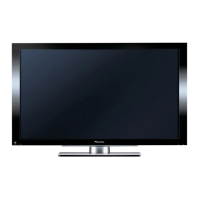
Do you have a question about the Pioneer PDP-507XD and is the answer not in the manual?
| Comb filter | 3D |
|---|---|
| Aspect ratio | 16:9 |
| Product color | Black |
| Noise reduction | Yes |
| Display diagonal | 50 \ |
| Display brightness | 1100 cd/m² |
| Display resolution | 1365 x 768 pixels |
| Display technology | Plasma |
| Viewable size diagonal | 1270 mm |
| Contrast ratio (typical) | 4000:1 |
General advice for maintaining screen longevity and satisfactory results.
Precautions and measures for safe and proper installation of the unit.
Automatic brightness adjustment to protect the screen from still images.
Explanation of pixel characteristics common to plasma display technology.
Information on potential interference caused by infrared rays.
Information on potential interference emitted by the product.
Explanation of normal operational sounds from the plasma display.
Explanation of normal operational sounds from the cooling fan.
Guidance on preventing and understanding image retention issues.
Recommendations to prevent screen burning for extended product life.
Essential precautions to observe when installing the unit.
Specific guidance for using optional stands or mounting brackets.
Guidance for using items other than specified Pioneer accessories.
Identification of the main unit's components and views.
Detailed view of the front panel components for PDP-607XD.
View of the side panel components.
Detailed view of the rear panel connectors for PDP-607XD.
Detailed view of the front panel components for PDP-507XD.
Detailed view of the rear panel connectors for PDP-507XD.
Detailed view of the front panel components for PDP-427XD.
Detailed view of the rear panel connectors for PDP-427XD.
Identification and function of the remote control unit buttons.
Steps and considerations for physically installing the television.
Guidance on choosing an appropriate location for the unit.
Instructions and precautions for safely moving the television.
Crucial safety measures to prevent the unit from tipping or falling.
Methods for securing the television when placed on a flat surface.
Instructions for securing the television to a wall for stability.
Procedure for connecting the main power supply.
Instructions for attaching the ferrite core to prevent noise.
Guidance on managing and routing cables for tidy installation.
Instructions for attaching speed clamps for cable management.
Guidance on connecting an antenna for optimal picture quality.
Steps for preparing the remote control, including battery insertion.
Procedure for inserting batteries into the remote control.
Information on the optimal distance and angle for remote control usage.
Instructions for powering the television on and off.
Explanation of the indicators on the front panel and their system status.
Procedures for tuning to different TV channels.
How to select between television and digital television input modes.
Using the remote control's channel increment/decrement buttons.
Direct channel selection using the numeric keypad on the remote.
Selecting channels from a pre-registered favourite list.
Adjusting the television's volume and sound settings.
Adjusting volume using the remote control buttons.
Muting the sound output using the remote control.
Selecting sound multiplex modes for broadcast audio.
Overview of features for displaying multiple screens simultaneously.
Procedure for selecting 2-screen or picture-in-picture display modes.
Function to capture and freeze a single frame from a moving image.
General procedure for navigating and operating the television's menus.
Overview of menu options available in AV mode.
Overview of menu options available in PC mode.
Describes typical procedures for setting up menus and functions.
Procedure for automatically searching and setting up TV channels.
Steps for initiating the automatic channel setup process.
Procedure for manually tuning and setting up analogue TV channels.
Steps for manually adjusting analogue TV channel settings.
Adjusting settings to reduce video noise for clearer broadcasts.
Function to inhibit selected TV channels from being tuned or watched.
Specifying the input terminal for a connected decoder.
Assigning custom names to TV channels for easy identification.
Procedure to change the sequence of preset TV programmes.
Selecting the display language for menus and instructions.
Choosing from six viewing options based on environment or content.
Adjusting picture settings for optimal viewing preference.
Adjusting color temperature for a better white balance.
Utilizing advanced functions for optimizing picture quality.
Enhancing film-based sources for high-definition picture quality.
Adjusting color reproduction space for optimal viewing.
Fine-tuning color reproduction for optimal tone.
Compensation for optimum color tones in images.
Reducing video noise for cleaner and crisper images.
Digital Noise Reduction feature to eliminate video noise.
Mosquito noise reduction for digital TV and DVD playback.
Block Noise Reduction to improve high-definition image quality.
Functions to optimize image quality by adjusting dynamic range.
Optimizing brightness and color signals for video and still images.
Adjusting sound quality to user preference.
Enhances sound direction and clarity.
Provides three-dimensional sound effects and deep bass.
Instructions for listening to audio from a sub-screen via headphones.
Convenient functions for power saving and management.
Modes to save power consumption by adjusting brightness and power.
Automatically places the system into standby mode if no signal is received.
Automatically places the system into standby mode if no operation is performed.
Manages power consumption when connected to a personal computer.
Introduction to Digital TV features, quality, and information services.
Procedures for changing channels in DTV mode.
Displaying programme information, start/end times, and channel details.
Turning subtitles on and off during DTV broadcasts.
How to reconfigure DTV channel settings after initial setup.
Procedure to change the country setting for DTV services.
Discarding current DTV setups and searching for receivable channels.
Searching and registering new channels with current DTV setups.
How to check the signal strength and quality for each TV channel.
Resetting all DTV settings to their factory default values.
Controlling the power supply to the antenna connected to the DTV terminal.
Managing channel settings including favourites, skip, and lock.
Selecting individual channels for favourite, skip, or lock functions.
Enabling the favourites function after registering channels.
Enabling the auto skip function for services like radio and text data.
Preventing children from watching age-restricted TV programmes.
Procedure to change the sequence of preset DTV channels.
Switching between PCM and Dolby digital audio formats.
Configuring language settings for audio, subtitles, and teletext.
Downloading and updating the system's software.
Manually executing the software update process.
Checking the hardware and software version numbers.
Procedure for installing a Conditional Access module and smart card.
Viewing information about the CA module installed in the Common Interface slot.
Explanation of the EPG screen layout and information displayed.
Details on viewing the general list of scheduled TV programmes.
Procedure for checking schedules, viewing programme info, and selecting programmes.
Setting digital TV programmes for watching or recording via EPG.
Manually presetting digital TV programmes by specifying date and time.
Rules determining priority when TV programme presettings overlap.
Procedure to change or cancel existing programme presettings.
Changing or cancelling programme presettings via the menu.
Modifying the priority order for overlapped programme presettings.
Overview of EPG functions that guide and save time.
Function to jump to specific dates and times within the EPG.
Searching EPG content based on criteria like date, time, channel, or genre.
Changing the vertical drive frequency for optimal screen display.
Adjusting horizontal and vertical image positions in AV mode.
Automatically adjusting image positions and clock for PC input.
Specifying the type of video signals received from connected equipment.
Selecting an appropriate color system for clear image display.
Switching between selectable screen size options based on input signals.
Automatically selecting screen size based on video signals or HDMI input.
Adjusting the brightness of grey side masks to reduce image retention.
Choosing between 4:3 or WIDE mode for 4:3 aspect ratio signals.
Automatically places the system into standby mode after a set time.
Procedure for entering a password to unlock features or menus.
Steps to change the existing password for security.
Restoring the password function to its factory default setting.
Deactivating the password protection function.
Viewing images from a connected decoder.
Procedure for connecting a decoder to the television.
Viewing images from a connected VCR.
Procedure for connecting a VCR to the television.
Utilizing the HDMI terminals for digital video and audio signals.
Steps for connecting equipment via HDMI terminals.
Procedure to activate the HDMI input terminal for use.
Setting the type of digital video signals for HDMI input.
Features for smooth connections between television and audiovisual equipment.
Selecting the appropriate SCART terminal for i/o link.A functionality.
Viewing images from a connected DVD player.
Procedure for connecting a DVD player to the television.
Function to record DTV programmes while watching or for timeshift playback.
Connecting and viewing content from game consoles or camcorders.
Procedure for connecting game consoles or camcorders to the INPUT 5 terminals.
Displaying images and video from a connected personal computer.
Procedure for connecting a personal computer to the PC terminals.
Steps to select and display PC images on the television screen.
Enhancing audio experience by connecting AV receivers or subwoofers.
Procedure for connecting audio equipment like AV receivers or subwoofers.
Connecting control cords for linked operations between Pioneer equipment.
Information about the SR+ feature for linked AV receiver operations.
Using the remote to control connected equipment like STB, DVD/DVR, or VCR.
Setting the remote control with manufacture codes for connected equipment.
A list of manufacture codes for setting up remote control functionality.
Functionality of remote control buttons when in STB mode.
Functionality of remote control buttons when in DVD/DVR mode.
Functionality of remote control buttons when in VCR mode.
Explanation of Teletext broadcasts and the services they provide.
Fundamental operations and controls for using the Teletext feature.
Procedure for activating and deactivating the Teletext display.
Methods for navigating and selecting Teletext pages.
Viewing multiple subpages as they are transmitted.
Reading a TOP text overview when receiving TOP Teletext.
Solutions for common problems and error code explanations.
Pin assignments and signal names for the mini D-sub connector.
Pin assignments for connecting audio and video devices via SCART terminals.
Technical details and specifications for the different Plasma Television models.
List of registered trademarks and copyrights associated with the product.

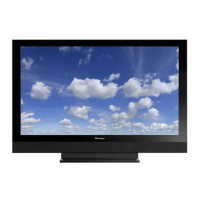
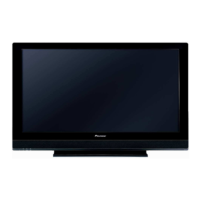

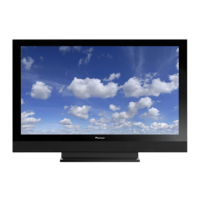


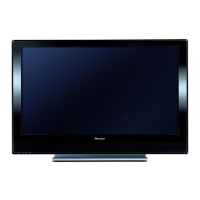

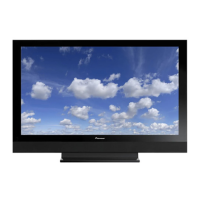

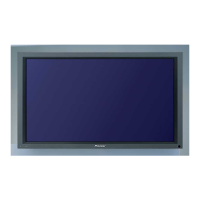
